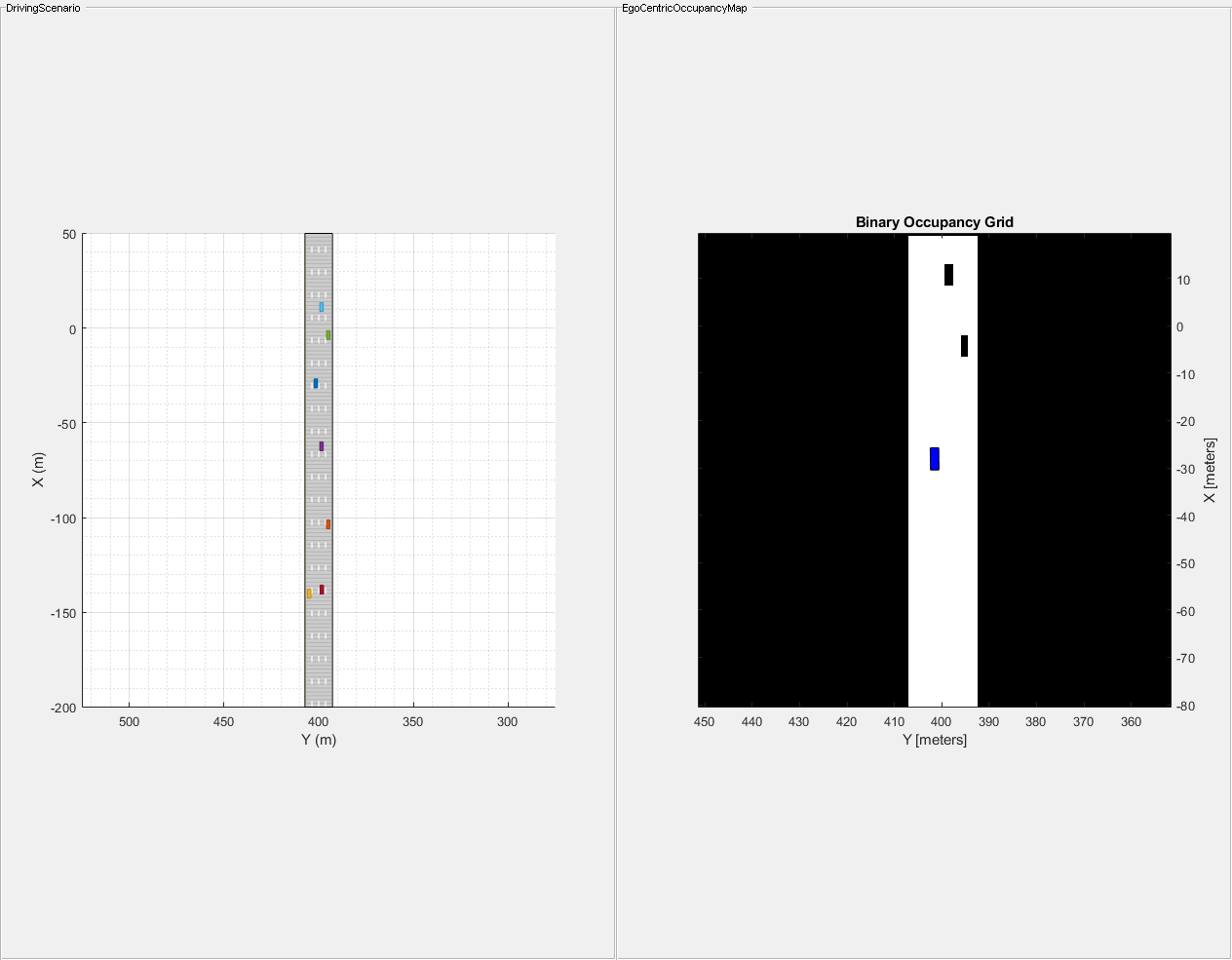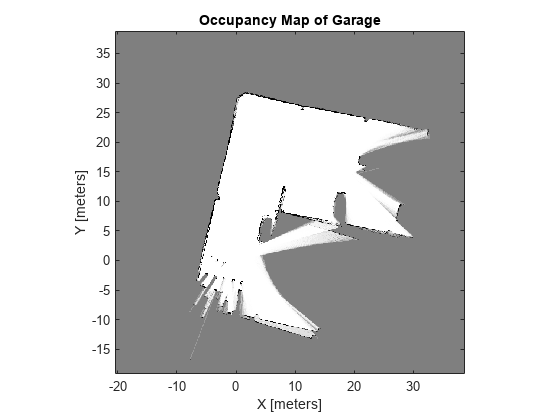Mapping
Occupancy maps are used to represent obstacles in an environment and define limits of your world. You can build maps and update obstacle locations from sensor readings using raycasting. Sync with existing maps and move local frames to create egocentric maps that follow your vehicle. Maps support binary and probabilistic values for 2-D maps and a probabilistic representation for 3-D maps.
Use these maps along with Motion Planning to plan paths in a map, or use Localization and Pose Estimation algorithms to estimate your vehicle pose in an environment.
Functions
Topics
- Occupancy Grids
Details of occupancy grid functionality and map structure.
- Fuse Multiple Lidar Sensors Using Map Layers
Occupancy maps offer a simple yet robust way of representing an environment for robotic applications by mapping the continuous world-space to a discrete data structure.
- Build Occupancy Map from Depth Images Using Visual Odometry and Optimized Pose Graph
This example shows how to reduce the drift in the estimated trajectory (location and orientation) of a monocular camera using 3-D pose graph optimization.


